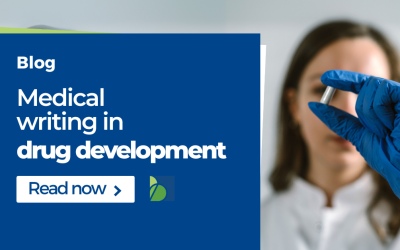Like the rest of the world, the pharmaceutical and biotech industries are beginning to worry about their ability to continue operations. And, with good reason. Russia’s invasion of Ukraine affects millions of people, not just in this Eastern European nation but throughout the world. As a result, drug developers will suffer delays throughout development, loss of business continuity, and risk of non-compliance for on-market products. How does the Russian invasion impact the pharmaceutical industry?
1. Access To Patients
Suppose we ask ourselves why the effect on the pharmaceutical industry matters; the answer is clear. To save patients’ lives, be it existing ones or war casualties, we need to guarantee access to medication. Viktor Lyashko, Ukraine’s health minister, advocates for ‘business as usual’ in the healthcare system in the face of Russia’s invasion, but how long can they ensure patients’ access to medicines? Ukraine will require tremendous ingenuity and assistance to replenish depleted medical supply reserves.
In comparison, before this invasion, the Ukrainian parliament evaluated the latest steps toward modernizing the state-guaranteed Ukrainian National Health Service (NSZU) within the context of a newly increased budget that ensures guaranteed minimum wages for health care professionals and enhancements to specialist care. Furthermore, as the country recovered from the Covid-19 outbreak, the World Health Organization showed great favour toward this program. However, Russia’s surprise invasion days later thwarted these good intentions.
2. Healthcare measures Ukraine
The Ministry of Health issued early emergency pleas for volunteer personnel, blood donations, and foreign assistance in response to the situation. From the first day of the invasion, demand for medicines and first-aid supplies increased predictably, followed by a quick depletion of available inventories of crucial medicines. Due to the broken logistical network, replenishment has become increasingly difficult. Especially painkillers, antipyretics, haemostatics and dressings are in high demand.
More practical steps followed this:
- The Ministry of Health cancelled elective hospital operations to make room for emergencies;
- Simplification of funding options to ensure continuous support for medical facilities under martial law;
- The Ministry of Health suggests that hospitals enter into direct supply contracts with manufacturers for pharmaceuticals, diagnostics, and dressings, bypassing the traditional tendering process;
- The Association of Pharmacy Professionals in Ukraine issued a pressing request to suppliers to allow for delayed payments and streamlined contracts;
- The WHO called for establishing a humanitarian corridor to guarantee medical supplies reach the most impoverished regions.
While optimism exists for the government to fight for a time of calm and service reconstruction, it’s difficult to fathom how terrible the situation will become if combat continues in Ukraine for an extended period across Ukraine. And thus hard to answer how the conflict between Ukraine and Russia impacts the pharmaceutical industry
3. Will the Ukraine-Russia conflict impact investments?
CEO and top-level executives of prominent pharmaceutical companies actually signed a letter, written in multiple languages, which called the Russian invasion of Ukraine a “barbaric act.” In itself a clear sign of how the conflict between Ukraine and Russia impacts the pharmaceutical industry in this region.
They opt that there is no use looking back wondering about more robust measures that should have been and instead justify the most vigorous possible economic measures, referred to in their letter as ‘complete economic disengagement’. Together with investors from the industry’s leading venture capital firms, they urge their peers to disengage from the Russian industry through measures ranging from ceasing investment in Russian companies to rejecting new funds from Russia.
4. Clinical Trials
Russia, Ukraine, and other CIS countries have been significant contributors to clinical trials in many therapeutic areas for several years. With access to experienced investigators, good quality, and large patient populations, we could often improve timelines in clinical trials by including them in more studies. However, with the current situation, we can expect hindered trials (at least) in Russia and Ukraine and relocation to other parts of Europe for new trials for the foreseeable future.
The impact of imposed sanctions and challenging trial logistics is increasingly challenging. Although we can manage the overall impact on biotech because sales and manufacturing activities in Ukraine and Russia are limited, clinical trial sites in Ukraine are unlikely to remain operational given the conflict. The effect of the conflict on clinical trials could be far-reaching.
How to proceed with Clinical Trials in Ukraine?
First and most of all. Focus on your local employees and their families, ease employee concerns and, if possible, support them financially and logistically.
In Ukraine, do not expect to start any new clinical trials or regulatory submissions or conduct patient screening and enrollment activities.
Additionally, a majority (if not all) of clinical trial subjects will most likely be discontinued from clinical trial participation. Therefore, it is pivotal to assess the impact on individual trials and keep an ongoing conversation with your stakeholders.
Ukraine’s State Expert Center offered clear recommendations as a result of the military aggression of the Russian Federation on the territory of Ukraine and implementation of the Martial Law to the various stakeholders of running clinical trials in Ukraine, which can be searched on the Ukraine Ministry of Health’s website.
How to proceed with Clinical Trials in Russia?
It would be best to instruct your teams to assess projects in a risk-based approach to conduct field or remote monitoring visits and appropriateness for active patients to remain enrolled in a clinical trial.
- Pause site activations, screening and enrollment activities in Russia
- Perform risk assessment with sites, customers and clinicians to make informed decisions.
- Prioritize patient safety enrolled in your clinical trials.
- While you can conduct the most critical clinical trial activities in Russia, it is at everyone’s discretion to continue their trials as practical.
- Monitor the situation and ensure proper governance to escalate issues and enable informed decisions.
How to adapt to a new landscape for clinical trials in Europe?
Biotechs can likely manage the uproar by moving to other countries or reallocating resources. Right now, the CEE region of EU countries is probably the best short-term option while waiting for a resolution and re-start of new trials in the CIS region.
They share similar benefits to conducting clinical trials in the CIS region:
- Eastern Europe represents the largest patient population in Europe
- Excellent patient recruitment rates
- Proven Clinical Quality Standards
- Relatively low density of clinical trials in CEE
- Highly experienced and motivated investigators
- Clear regulatory environment and favourable study start-up timelines
- Competitive per patient costs
Clinical trial sponsors show a steadily increasing interest in conducting studies in the region. While Eastern European nations are not always the best option for all diagnoses, they can considerably enhance numerous clinical trial strategies. As a result, sponsors should consider including clinical sites in this region during the research design phase.
5. How are Pharmacovigilance activities affected?
Although it might not be the first thing we think of in a situation like this, it is pivotal to ensure patient safety; to the extent of what is possible.
Significant changes to a company’s pharmacovigilance capacity can lead to increased risks of operational gaps and, in this case, missed safety signals. A proper Risk Management Process can help assess, prioritize, and adapt where possible to mitigate the situation.
Close and consistent monitoring of the pharmacovigilance process is crucial to stay compliant and avoid, e.g., the risk of tainted drug products making their way into the chain and affecting patients. Of course, we don’t know how long it is feasible to continue— with limited colleagues and resources remaining in Ukraine. Therefore, wherever possible, it’s paramount to remain vigilant, ensure PV inbox management, screen essential journals, and try to cover the minimum as part of legal requirements, at least.
6. Regulatory Affairs
So far, existing drug registrations in Ukraine and Russia are unaffected. However, it would be wise to assume that delays in procedures are ahead. Operations at Ukraine’s local health authorities are obviously limited, and in Russia, the restricted financial traffic will severely hinder the transaction of state fees.
Although there are no official statements, one particular question comes to mind. How will the conflict between Russia and Ukraine impact implementing the plans to create a uniform pharmaceutical industry in the EAEU?
Up until now, the fast-growing pharmaceutical market of the Eurasian Economic Union (EAEU) was of great interest to many biotech and pharmaceutical companies.
The EAEU consists of Russia, Kazakhstan, Belarus, Armenia, and Kyrgyzstan and has more than 185 million people with an estimated GDP of around $5 trillion. For Russia, the turnover for 2021 was around $39 billion, which is up from $28 billion in 2017.
The EAEU was formed in 2014 and is headed by the Eurasian Economic Commission (EEC). In the future, they were planning to include a single pharmaceutical regulator similar to the European Medicines Agency (EMA) and a common drug registration procedure.
Recent events could jeopardize the EAEU’s vision, and we will keep a watchful eye on developments.
7. How is the Russian pharmaceutical industry affected by the conflict?
Although it is tempting to focus solely on Ukraine, we can’t ignore the Russian pharmaceutical market. Up until now, it was a favoured country to expand your reach into as a pharmaceutical company to run clinical trials and register drug products or medical devices.
Besides different operational issues, Russia’s circumstances are different from Ukraine’s because they will have to deal with a tainted international reputation. There is no way to tell how long it will take to recover. Moreover, while direct sanctions on medicines are off the international agenda for the foreseeable future, the sanctions will be hugely detrimental to Russia’s access to healthcare and medicines.
The Russian Pharmaceutical Manufacturers Association warned that European suppliers have already begun to obstruct the transit of pharmaceutical raw materials to Russian facilities, making subsequent supply contracts virtually impossible to acquire.
Alongside this, companies already feel the economic effects of the Ruble taking a free dive and the likelihood of drug withdrawals and shortages related to unsustainable import costs.
Do you have questions? Get answers.
Of course, no one can predict the outcomes of the Ukraine-Russia conflict on the future of the pharmaceutical industry. However, based on over 20 years of experience in Russia, Ukraine and the other CIS countries, we can share valuable insights on how to approach the situation and offer detailed answers to specific questions.
To help companies navigate these precarious circumstances, we’re hosting a webinar next week in which we provide a short overview of the current situation followed by a Q&A session with an expert on clinical trials, pharmacovigilance, and regulatory affairs in this region.
We welcome all questions ahead of and during the webinar and look forward to meeting you there.














